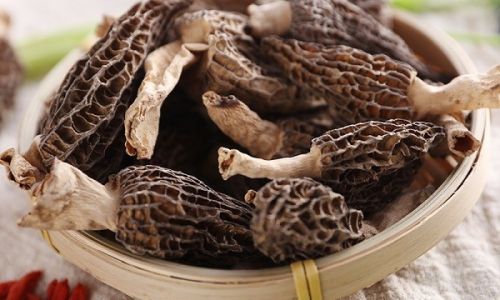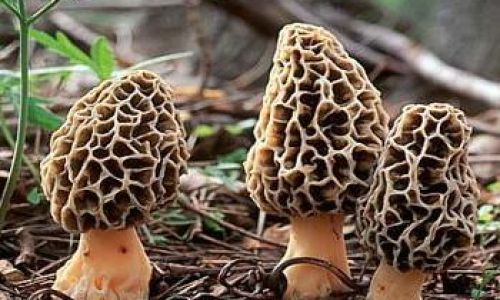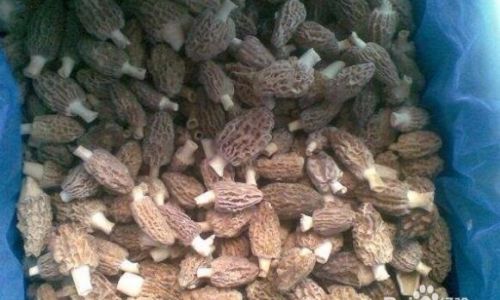Introduction
Morel mushrooms, scientifically known as Morchella esculenta, are highly esteemed for their unique flavor, rich aroma, and nutritional benefits. These elusive fungi, often referred to as ‘elf’s saddle’ due to their irregular, honeycomb-like caps, thrive in symbiotic relationships with trees and are a culinary delight across various cultures. However, the fleeting availability and delicate nature of morels necessitate careful handling and storage to preserve their quality and extend their shelf life. This article delves into the optimal storage methods for morel mushrooms, ensuring that their exquisite taste and nutritional profile are retained until consumption.
Understanding Morel Mushrooms
Before discussing storage techniques, it’s crucial to understand the basic characteristics of morel mushrooms. Morels are typically found in spring, emerging after winter rains in deciduous and coniferous forests. Their caps can range from gray to brown, with a sponge-like texture that traps moisture and debris. The stems are firm and hollow, contributing to their distinct texture when cooked. Morels are rich in vitamins, minerals, antioxidants, and contain significant amounts of potassium, iron, and selenium. Their umami-laden flavor makes them a sought-after ingredient in gourmet dishes worldwide.

Importance of Proper Storage
Proper storage of morel mushrooms is paramount to maintaining their freshness, texture, and flavor. Improper handling can lead to rapid spoilage, characterized by sliminess, discoloration, and off odors. Morels are highly perishable due to their high moisture content and delicate structure. Therefore, effective storage strategies aim to reduce moisture loss, inhibit microbial growth, and preserve the mushrooms’ natural qualities.
Initial Preparation for Storage
Before storing morel mushrooms, thorough cleaning and preparation are essential. Here’s a step-by-step guide:
-
Harvesting and Sorting: If harvesting wild morels, ensure they are fully mature and free from insects, dirt, and debris. Sort through the mushrooms, discarding any damaged or moldy specimens.
-
Cleaning: Morels should be gently brushed with a soft brush or a damp cloth to remove surface dirt. Avoid soaking them in water, as this can cause them to absorb excess moisture and lose their flavor. If absolutely necessary to wash, do so quickly under cold running water and pat dry immediately with paper towels.

-
Trimming: Cut off the tough, woody stems if desired, as they can be bitter. The caps and tender stem portions are generally used in cooking.
-
Drying: For long-term storage, consider drying the mushrooms. This can be done naturally by spreading them in a single layer on baking sheets and placing them in a well-ventilated area away from direct sunlight. Alternatively, use a food dehydrator set to a low temperature to preserve the mushrooms’ color and flavor.
Short-Term Storage Methods
For immediate use or short-term preservation, consider the following methods:
-
Refrigeration: The most common short-term storage method for morel mushrooms is refrigeration. Place cleaned and dried morels in a paper bag or an airtight container lined with paper towels to absorb any excess moisture. Store in the crisper drawer of your refrigerator, where humidity is controlled. Use within 3-5 days for best quality.
-
Vacuum Sealing: For extended freshness, vacuum-seal cleaned and dried morels. This removes oxygen, slowing down spoilage processes. Vacuum-sealed morels can last up to a week in the refrigerator.

Long-Term Storage Methods
For those who wish to enjoy morel mushrooms beyond their seasonal availability, long-term storage techniques are invaluable.
-
Freezing: Freezing is an effective way to preserve morels for several months. After cleaning and drying, blanch the mushrooms in boiling water for 2-3 minutes to halt enzymatic activity that causes spoilage. Plunge them into ice water to stop the cooking process, then pat them dry. Arrange them in a single layer on a baking sheet and freeze until solid. Transfer the frozen mushrooms to airtight containers or freezer bags, removing as much air as possible. They can be stored in the freezer for up to a year.
-
Drying: As mentioned earlier, drying is another excellent long-term storage option. Completely dried morels can be stored in airtight containers or vacuum-sealed bags in a cool, dark place. Properly dried morels can last for several years, retaining much of their flavor and texture when rehydrated before use.
-
Canning: While less common for morels, canning can be an option for long-term preservation. This involves packing cleaned and prepared mushrooms into jars, adding a preserving liquid like water, vinegar, or broth, and processing them in a pressure canner to ensure sterility. Canned morels should be stored in a cool, dark pantry and can last for up to two years.
-
Pickling and Preserving: Morels can also be pickled or preserved in vinegar-based solutions, adding a tangy flavor and extending their shelf life. This method is particularly suitable for those who enjoy the tang of pickled mushrooms in salads or as condiments.

Monitoring and Maintenance
Regardless of the chosen storage method, regular monitoring is crucial. Check stored morels periodically for signs of spoilage, such as mold, discoloration, or off odors. For refrigerated and frozen mushrooms, ensure that temperatures remain consistent to maintain quality. For dried morels, store them in an environment with low humidity to prevent reabsorption of moisture.
Conclusion
Morel mushrooms are a culinary treasure that deserve careful handling and storage to fully appreciate their unique qualities. By understanding the basic characteristics of these fungi and employing effective short- and long-term storage techniques, enthusiasts can enjoy the rich flavor and nutritional benefits of morels throughout the year. Whether through refrigeration, freezing, drying, or canning, the right approach ensures that these elusive mushrooms remain a delightful addition to any gourmet meal. With the right storage methods in place, morel mushrooms can continue to delight the palate and nourish the body, even beyond their brief seasonal appearance in nature.





0 comments